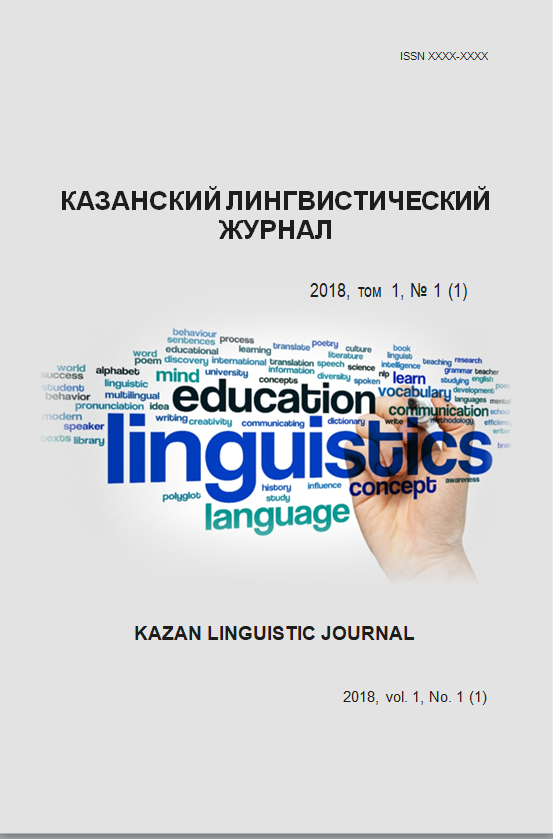Technologies of stimulating foreign language communication in conditions of vocation oriented training in a non-linguistic institution
Keywords:
student, education, teaching, learning, technology, vocation orienting, stimulating, motivationAbstract
Constituents of the technology of students’ foreign language speech stimulating during their vocation oriented training have been considered. Shown is the dominant role of motivation in awakening and keeping students’ interest to speek in a foreign language. Stated is that to make students produce a foreign language speech due to the diversity of their personal characteristics it is necessary to use different techniques appropriate to their features, as well as information ones.
References
References
Burt M., Dulay H. and Finocchiaro M. (eds.) Viewpoints on English as a Second Language / New York: Regent's Publishing Company, 1977.
Makayev Kh.F., Makayeva G.Z. Overcoming Language Barrier as an Effective Way of Forming a Foreign Language Communication Competence of a Future Specialist: Monograph / Kh.F. Makayev, G.Z. Makayeva. Kazan: Otechestvo, 2017. 126 p.
Yeremeyeva G.R., Mitko G.V., Dodon B.V. Automatic Captioning on YouTube in the Process of Foreign Language Learning / Information Technologies in Research Area of Diversely Structured Languages. Collection of Articles of the I International Internet Conference of Young Researchers. Kazan: Kazan University Publishing House, 2017. 154 p. Pp 82–84.
Atabekova A.A. Hypertext on the Base of WEB – Techniques as an Active Instrument for Organizing the Lesson during the Process of a Foreign Language Teaching // Problems of Linguistics and Methods of Teaching Foreign Languages. Iss. IV. М.: Publishing House of Moscow University, 2000. Pp. 94–97.
Bernstein V.L. The Ways of Forming Cross cultural Communicative Competence at Foreign Language Lessons // Teaching Foreign Languages and Cultures: Problems, Searches, Decisions (Lempertov Readings – VII). Materials of International Scientific Methodical Symposium « Teaching Foreign Languages and Cultures: Problems, Searches, Decisions» (Pyatigorsk, May 19–20 2005). Pyatigorsk: PSLU, 2005. 212 p.
Bodalev A.A. Psychology of Communication: Encyclopedic Dictionary. М.: Kogito- Centre, 2011. 600 p.
Dadayan E.G. Communication Barrier and Some Reasons of its Emergence // Teaching Foreign Languages and Cultures: Problems, Searches, Decisions (Lempertov Readings – VII). Materials of International Scientific Methodical Symposium « Teaching Foreign Languages and Cultures: Problems, Searches, Decisions» (Pyatigorsk, May 19–20 2005). Pyatigorsk: PSLU, 2005. 212 p.
Raven J. Pedagical Testing: Problems, Confusions, Perspectives / Translated from English. Publ.2. М.: «Kogito-Centre», 2001. 142 p.
Masgoret A.M. & Gardner R.C. (2003). Attitudes, motivation, and second language learning: A meta-analysis of studies conducted by Gardner and Associates. Language Learning, 53, Pp. 123–163.
Ebata, M. Motivation Factors in Language Learning. The Internet TESL Journal, XIV. Retrieved January 23, 2013 from URL: http://iteslj.org/Articles/Ebata-MotivationFactors.html






